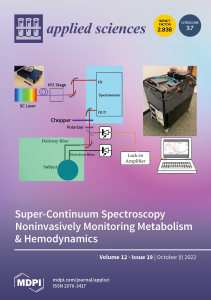In Silico Modeling and Quantification of Synergistic Effects of Multi-Combination Compounds: Case Study of the Attenuation of Joint Pain Using a Combination of Phytonutrients
V.A. Shiva Ayyadurai, and Prabhakar Deonikar
Applied Sciences
https://doi.org/10.3390/app121910013
Background
The quantification of synergistic effects of multi-combination compounds is critical in developing “cocktails” that are efficacious. In this research, a method for in silico modeling and the quantification of synergistic effects of multi-combination compounds is applied for assessing a combination of phytonutrients for joint pain. Joint pain is the most prominent and disabling symptom of arthritis. Arthritic pain leads to a reduced quality of life. This research explores the efficacy of a synergistic combination of two plant-based flavonoids—apigenin and hesperidin—on joint pain. The study employs computational systems biology: (1) to identify biomolecular mechanisms of joint pain; (2) to identify the specific effects of apigenin and hesperidin, individually and in combination, on the mechanisms of joint pain; and (3) to predict the quantitative effects of apigenin and hesperidin, individually and in combination, on joint pain and whether these combination effects are synergistic or additive. Four molecular pathways that are affected by apigenin and hesperidin include the following: (1) arachidonic acid metabolism, (2) PGE2 signaling, (3) COX-2 synthesis, and (4) oxidative stress. The combination of apigenin and hesperidin significantly lowered PGE2 production, CGRP production, TRVP-1 synthesis, COX-2 production, and reactive oxygen species (ROS) production. Our results indicate that the apigenin and hesperidin combination synergistically affected four of the five modalities to attenuate joint pain.
Materials and Method
The methodologies used to identify molecular mechanisms involved in joint pain and the prediction of the quantitative effects of apigenin and hesperidin on these mechanisms are described in this section. The CytoSolve® computational systems biology platform is employed in this process. The protocol for setting up and using CytoSolve® is provided in Supplementary Materials. This protocol consists of up to six (6) elements. Five (5) of those six (6) elements were used for this study.
Results
Effects of apigenin and hesperidin, individually as well as in combination, were analyzed on the joint-pain integrated model. Figure 2 illustrates the effect of apigenin and hesperidin on joint-pain molecular pathways. Initial simulations were conducted for a dose range of 0 to 100 mg for apigenin and 0 to 5000 mg for hesperidin to identify an efficacious dose level for each of phytonutrient on all four mechanisms of action analyzed in this study (please see Supplementary Materials Section S3.2 for the detailed results from initial simulation studies). The initial results indicated that 30 mg of apigenin and 1000 mg of hesperidin were most effective in reducing all five biomarkers (COX-2, PGE2, TRPV1, CGRP, and ROS) of joint pain. Increasing the dose levels of apigenin to more than 30 mg and hesperidin to more than 1000 mg did not further reduce the biomarker levels. Based on these preliminary results, dose levels of 30 mg and 1000 mg were chosen for apigenin and hesperidin, respectively, to simulate their individual and synergistic effects on biomolecular pathways of joint pain.

